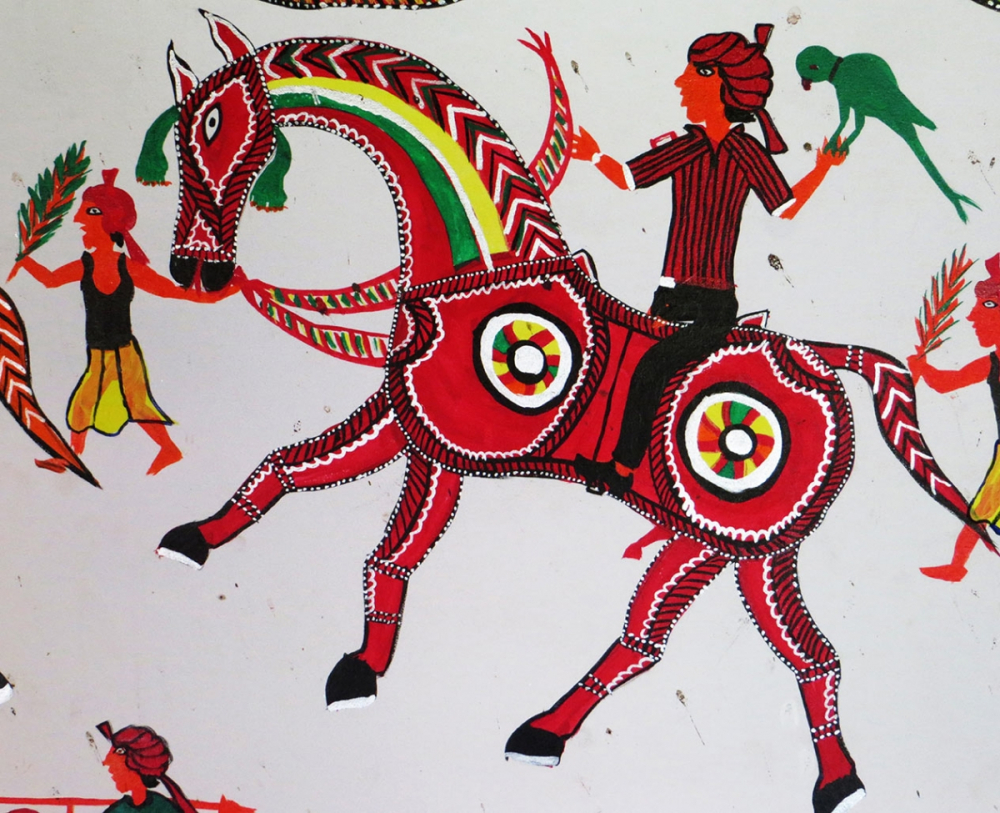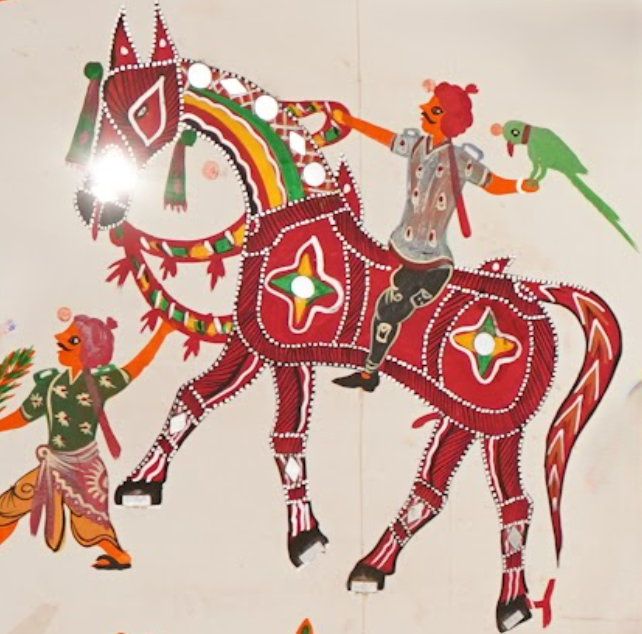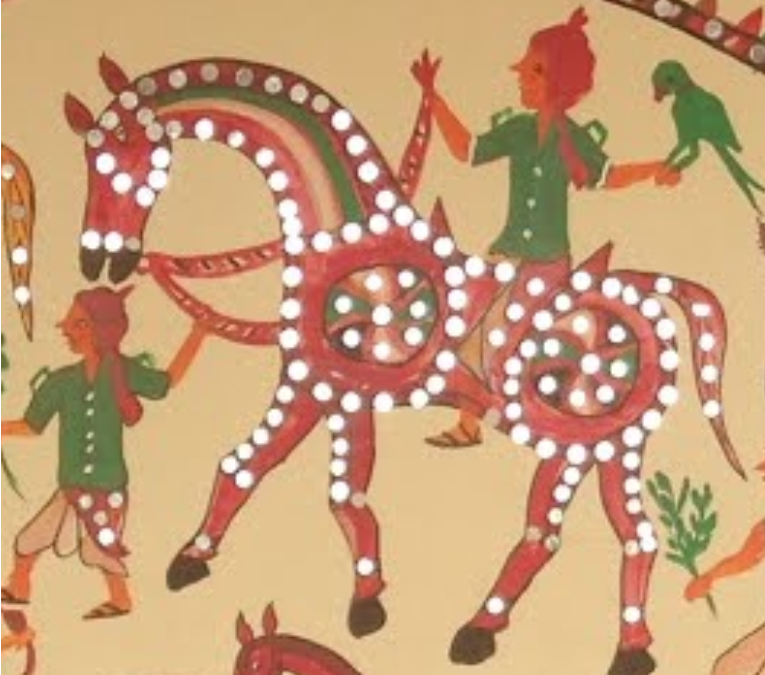tribal paintings
The Baba Ind, gujarat

The Baba Ind motif is the dominant theme in the Pithora paintings, a religious art form followed by the Rathwa Tribe of Gujarat. The murals are painted as a sacrifice or thanksgiving to gods, frequently celebrating milestones or to keep promises. Baba Ind symbolizes divine direction, extensively depicted during ceremonies to ensure prosperity, health, and happiness to families. The paintings are a tool of spiritual expression and cultural representation for the Rathwas.

Baba Ind is also portrayed as a symbol of good fortune and protection in Pithora art. His image is often infused with aspects of power and divinity, symbolizing prosperity for livestock, crops, and family well-being. The motif is but one of many that represent cosmic harmony, consisting of gods, nature, and ancestors. The motifs are not just aesthetically pleasing, but are also sacred symbols that interweave mythological storylines and ritualistic practices.

The process of creating Pithora paintings is involved with elaborate rituals. The walls are cleaned with cow dung and white chalk powder by unmarried girls, then painted by male artists with natural colors and vegetable dyes. It is a meticulous process to preserve spiritual purity. The theme of Baba Ind, as well as others, is elaborately drawn on the three tiers of Pithora art, incorporating divine imagery, wedding procession of gods, and aspects of creation.

The Baba Ind motif is of great ritual importance, connected with ceremonies such as thanksgiving for the accomplishment of vows or seeking blessings in times of hardship. It features prominently in the five-year celebration in villages, with music, dance, and rituals conducted by priests. The motifs, especially Baba Ind's, represent spiritual protection and indicate the Rathwa's gratitude and devotion to their deities.

The Baba Ind motif is characterized by bold colors and symbolic motifs including parrots, flowers, and celestial shapes that merge mythology and artistic convention. It embodies communal harmony and the blessing of god. Like in other Pithora paintings, it is thick with narrative and spiritual meaning and mirrors the cosmological beliefs of the Rathwa and their intense relationship with nature and their deity.


